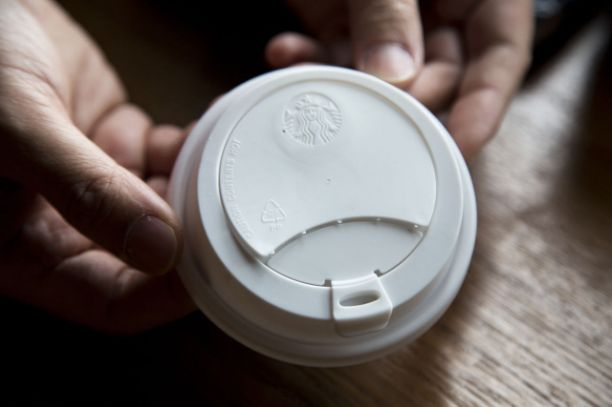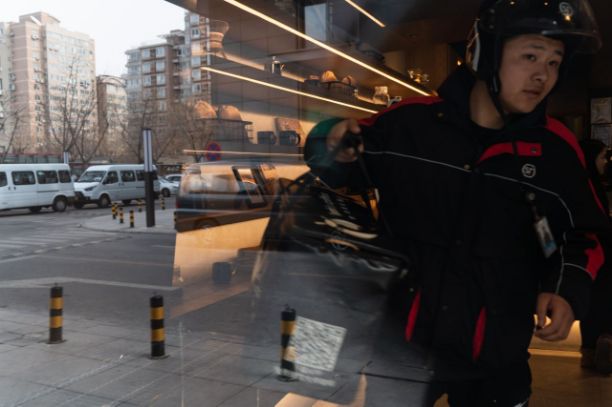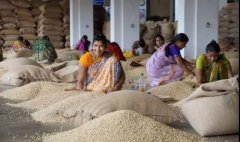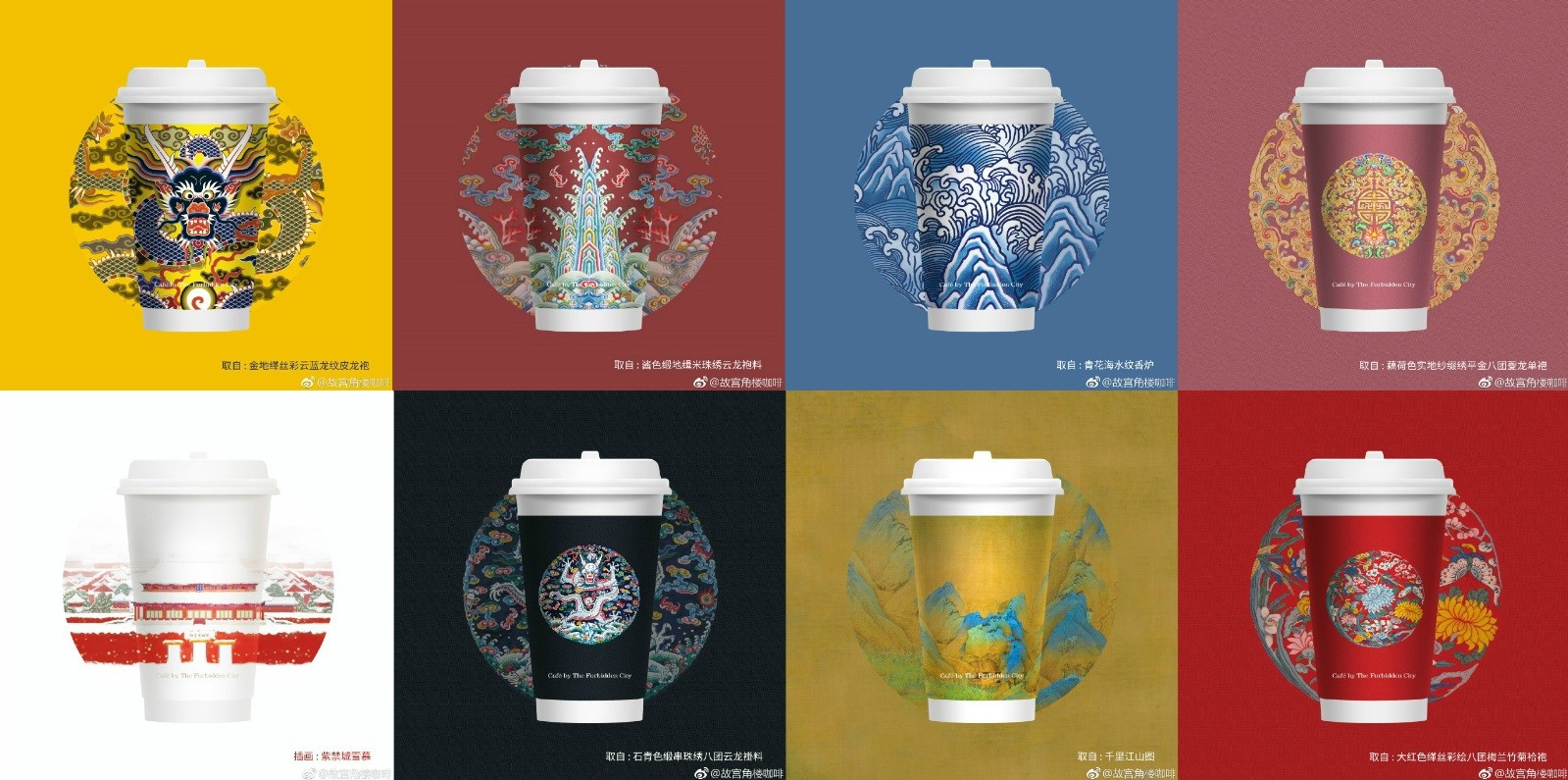Starbucks promotes takeout service in China to compete with Luckin Coffee

Professional coffee knowledge exchange more coffee bean information please follow the coffee workshop (Wechat official account cafe_style)
Starbucks' idea of building a coffee empire in China is that consumers here want to be seen sitting in its stylish coffee shop.
Now the Seattle-based company is trying to maintain its position as Luckin Coffee, a local start-up, has won over a new class of Chinese consumers who often want coffee delivered quickly. The sudden rise of Luckin Coffee has forced Starbucks and McDonald's Co., MCD to join the competition to build distribution systems to best adapt to the fast-growing Chinese market.
In the Wudaokou community in Beijing, Luo Fei, a 24-year-old manicurist, began ordering Luckin Coffee at the beginning of the year. For a week last month, she ordered a hazelnut latte from Luckin Coffee every day. She was impressed by the fact that each delivery time was no more than 20 minutes. Luo Fei says it's pretty fast each time.
The competition over coffee sales shows how important distribution has become for western companies doing business in China and how quickly competitors can rise.
China is the most populous country in the world, its cities are densely populated, and local consumers are used to ordering takeout meals and buying fast-delivery consumer goods. In some cities, because too many orders are delivered at the same time, office buildings and residential estates have even arranged for robots to receive goods to avoid congestion in elevators.
Starbucks, which has been operating in China for 20 years, has focused on the wealthiest consumers, opening thousands of well-equipped stores where customers can slowly enjoy an expensive drink. Delivery is a new service recently. In the past, Starbucks served coffee delivery through unofficial stores, but in August, Starbucks teamed up with Ele.me, a delivery platform owned by the Alibaba Group, to provide delivery services at its first 150 stores in September.
The coffee giant has spent nearly two years developing special caps and packaging to prevent drinks from spilling or cooling as they rush to customers' hands.
Luckin Coffee, backed by venture capital and run by local managers, has integrated delivery into the services of basic stores from the very beginning. Since its inception in October 2017, Luckin Coffee has raised $1 billion and opened 2000 stores, many within walking distance of Starbucks, mainly giving away or taking away, according to Thinknum, a financial analysis company.
Reinout Schakel, chief strategy and financial officer of Ruixing, said that Lucky knew that Starbucks had done market research and that Starbucks had opened its stores in places with high demand. Lucky is currently in talks to get about $200 million in loans from several Wall Street banks, according to a person familiar with the matter. It is understood that the company is also preparing for an initial public offering (IPO) in New York, which could take place as early as the first half of this year, with a valuation target of $3 billion.
Kevin Johnson, chief executive of Starbucks, praised the coffee giant's expansion opportunities in China, while acknowledging the challenges posed by adapting to changing industry patterns and consumer behavior. China is Starbucks' largest market outside the United States. Johnson told investors in January that Starbucks expects competition to continue to greatly boost the industry and bring about subversion.
In China's major cities, Starbucks and Lucky promised to deliver within half an hour. McDonald's launched a coffee delivery service in Shanghai last year and promised to deliver it within 28 minutes, but only in a small number of restaurants.
Starbucks currently operates 3700 stores in China and plans to add nearly 600 this year. Luckin Coffee plans to open about 2500 new stores in China this year, bringing the total to 4500. Both companies hope that takeout services will tempt consumers to drink coffee more frequently and buy more profitable coffee products in brick-and-mortar stores.
This is a big bet because coffee is not very popular in China. Researchers at Sanford C. Bernstein say China consumes five to six cups of coffee a year, compared with more than 300 cups in the United States. In addition, analysts point out that similar to the situation of takeout services in the United States, delivering coffee to consumers in China is basically a loss-making business.
Starbucks and Luckin Coffee would not disclose the cost of coffee takeout or how much money they have invested in the service. But coffee at Starbucks costs much more than Luckin Coffee, and Luckin Coffee is attractive to cost-conscious consumers at a time when China's economic growth has slowed.

In Beijing, courier Zhang Yongxu picked up a delivery box and was ready to deliver the goods in the order.
In Beijing, it costs 37 yuan ($5.52) to order 16 oz American coffee takeout from Starbucks and 27 yuan ($4.02) to order Luckin Coffee takeout. Starbucks orders include an additional fee of 9 yuan ($1.34) paid to ele.me, which is delivered by the Ele.me takeout rider. Luckin Coffee's order includes a fee of 6 yuan ($0.89) paid to his delivery partner SF Express.
Takeout companies charge an average of 7 yuan ($1.04) per order for Starbucks and Luckin Coffee, according to David Dai, a senior analyst at Sanford C. Bernstein in Hong Kong.
Last year, Starbucks' same-store sales in china fell 2 per cent in the fiscal third quarter to July, surprising investors, in part because of fierce competition for takeout. Starbucks sales have improved over the past two quarters, but growth has slowed significantly since before Luckin Coffee began to expand.
Starbucks expects its profit margins in China to be adversely affected by takeout-related costs this year. The company is aggressively promoting its takeout service, targeting about 90 per cent of Starbucks stores in China by September. Sanford C. Bernstein estimates that Starbucks generated about $2.5 billion in revenue from China in fiscal 2018, accounting for 10% of total revenue. Luckin Coffee is a private company and has not yet released sales figures.
In a city like Beijing, it is not easy to deliver coffee from stores to consumers. In these cities, coffee takeout is delivered by electric car. Takeout workers have to face heavy traffic and shuttle through the crowded flow of people in the building lobby in order to deliver the goods to consumers as soon as possible.
Each Starbucks takeout order uses a special leak-proof cover to cover the cup and a delivery bag to seal it to prove to consumers that the product has not been touched. Store-supplied caramel MACCHIATO will be covered with caramel syrup, while takeout products will be replaced with a more lasting caramel-flavored foam.
Dong Leng, 25, said she would extravagantly buy a Cappuccino at a Starbucks store in Beijing in the morning because she liked the sound of the machine and the warmth of the cup in her hand. In the afternoon, she will order a cup of Luckin Coffee to cheer her up. Luckin Coffee is much cheaper than Starbucks, she said.
(this article belongs to Dow Jones and may not be translated or reproduced without permission. )
END
Important Notice :
前街咖啡 FrontStreet Coffee has moved to new addredd:
FrontStreet Coffee Address: 315,Donghua East Road,GuangZhou
Tel:020 38364473
- Prev

What is the monsoon treatment in India? How should I drink the Indian monsoon Malaba coffee?
Professional coffee knowledge exchange more coffee bean information please follow the coffee workshop (Wechat official account cafe_style) when it comes to India, the first thing that comes to mind is curry! But in fact, there are coffee producers in India. There is nothing more typical of Indian coffee than the monsoon-treated Malaba, which also brings a unique flavor to beans. Just baked a furnace of Malaba, today is small
- Next

Beijing Imperial Palace coffee cup "Morandi + emperor dragon pattern" is so beautiful! Net urge: come out of the ceramic cup
Professional coffee knowledge exchange more coffee bean information please follow the coffee workshop (Wechat official account cafe_style) ▲ the turret restaurant in the Forbidden City in Beijing with coffee cups and put on a brand new coat. (photo / photo taken from Weibo / Imperial Palace turret coffee) the Imperial Palace in Beijing has frequently launched Wenqing products to attract attention. in addition to cosmetics, the turret restaurant now located in the Forbidden City has been replaced with a brand new one.
Related
- What documents do you need to go through to open a coffee shop? coffee shop coffee shop certificate processing process
- How to purchase Coffee beans in small Cafe how to choose a suitable supplier for domestic Coffee supply Company
- How to drink Starbucks Fragrance White Coffee? how to make Australian White Coffee? what Italian coffee beans are recommended?
- The Story of Flora Coffee: the name of Flora Coffee Bean and the implication of the Flowers on Florna Coffee
- How much does a cup of coffee cost? How much is the profit of a cup of coffee? What is the profit of the coffee shop in a year?
- Yunnan small Coffee, known as "fragrant Coffee", introduces the characteristics of Alpine Arabica Coffee producing areas in Yunnan, China
- 2023 latest Starbucks full menu price list how much is a cup of Starbucks coffee what is better to drink the most popular hot and cold drinks recommended
- Starbucks different kinds of Coffee Price list Starbucks menu 2023 Top Ten Best drinks in Starbucks
- Starbucks Spring praise Comprehensive matching Coffee Bean theme Story Packaging implication and taste description
- The cost of a cup of coffee latte American coffee cost price and selling price

